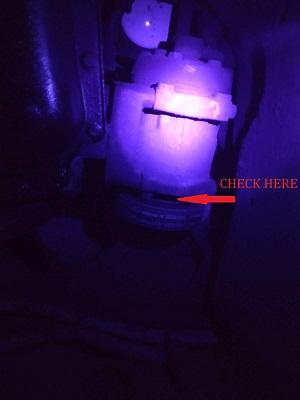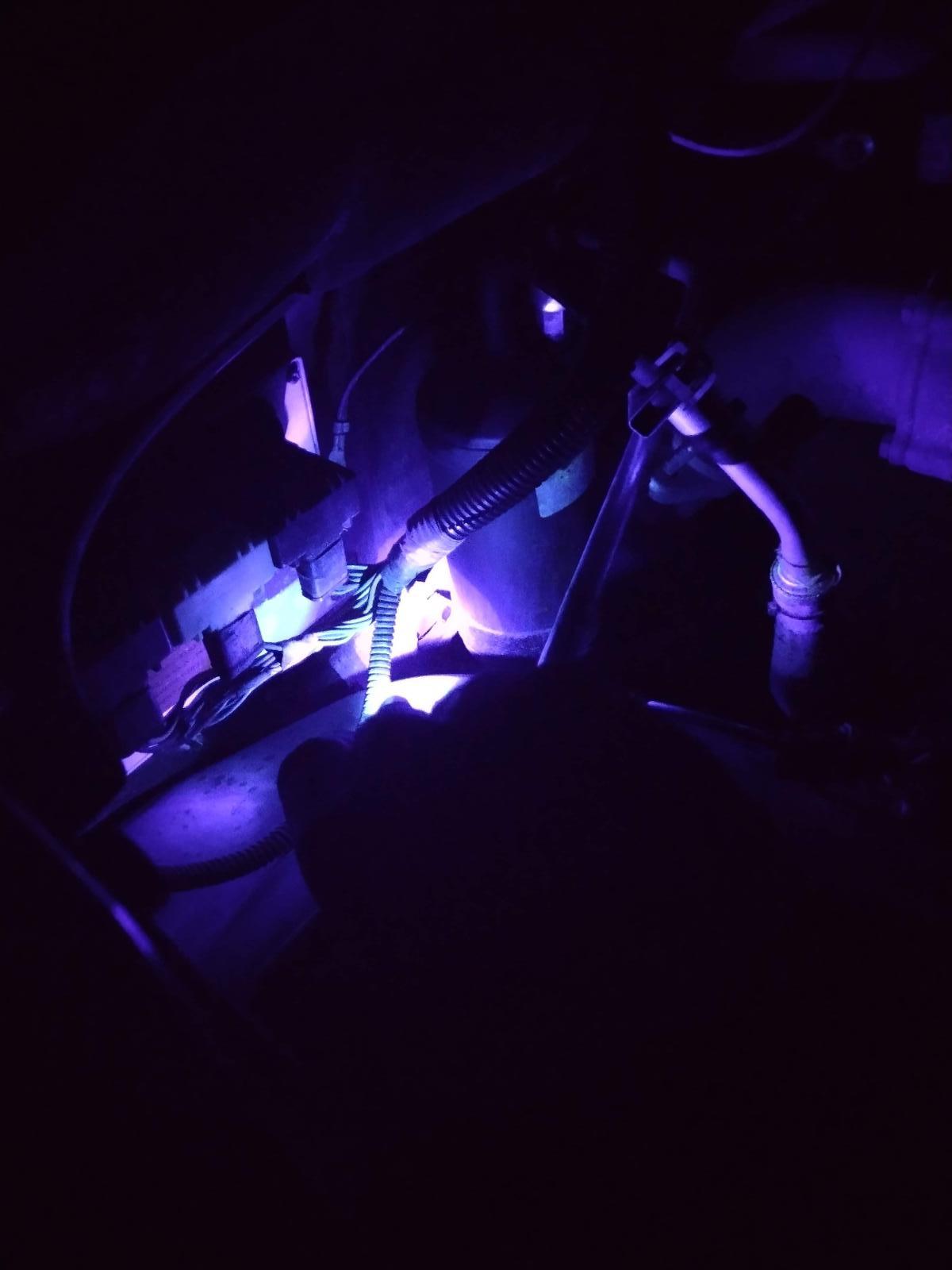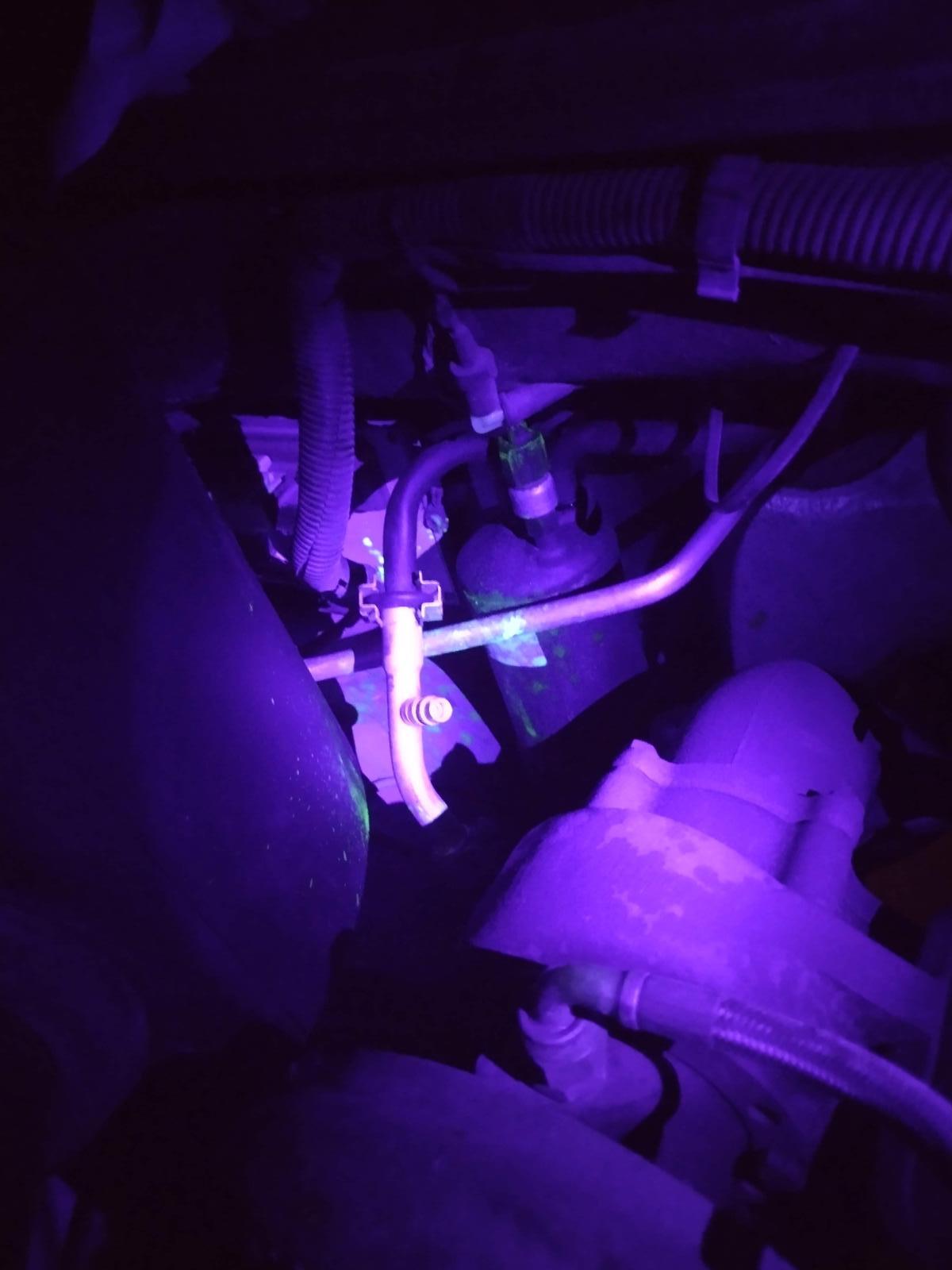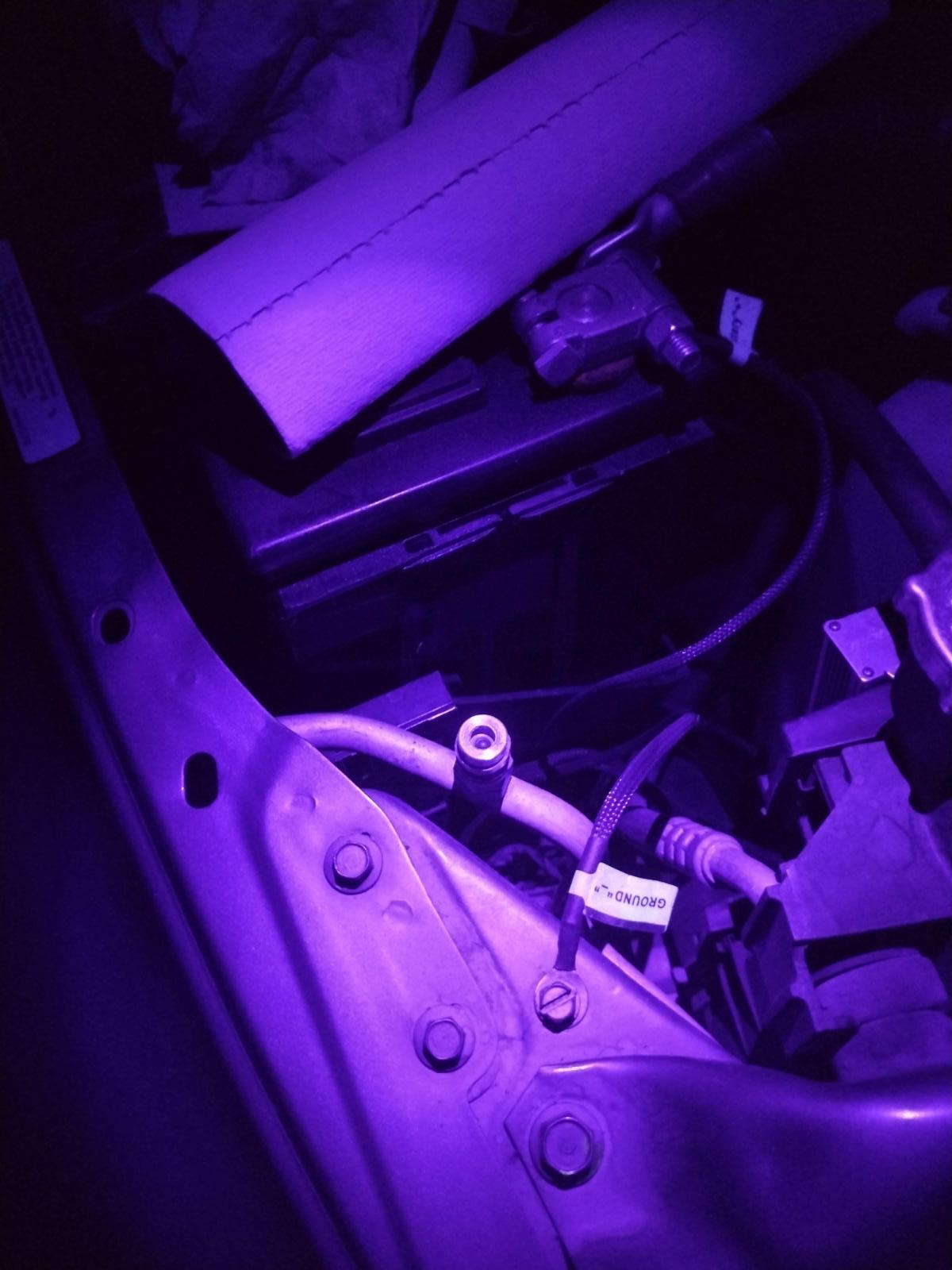- Replies 10
- Views 1.3k
- Created
- Last Reply
Top Posters In This Topic
-
jaredwins 4 posts
-
 IBMobile 3 posts
IBMobile 3 posts -
 01_Cummins_4x4 1 post
01_Cummins_4x4 1 post -
 Tractorman 1 post
Tractorman 1 post
Most Popular Posts
-
That shows that the static high and low sides pressures have equalized and there is enough pressure to close the low-pressure switch and energize the clutch coil. I check temperature outpu
-
The leak detector dye should still remain in the system, and is probably the easiest way to locate a leak vs using soap and water. Yes, the water drain is located on the passenger side fir
-
The dye mixes with the PAG refrigerant oil and lasts forever. At the point there is a leak there will be fluorescent staining from the dye. Glasses with UV light or sniffer are best. S






First off, thanks to Moparman and IBMobile's A/C troubleshooting tips. I'm not mechanically inclined, and A/C is a mystery to me, but after spending a good portion of the day reading, and watching videos I'm starting to understand.
Some background - took to the shop, mechanic recharged and put dye in, A/C was good for ~1 month then started blowing warm. Took back, he couldnt find the leak, recharged with dye and kept it for a week, blowed for ~1 month, now it's warm again. I believe he used a Freon with leak patch.
Since it's a time and money commitment to get it to him, I got a loaner Manifold gauge and Vacuum pump and set it up tonight.
With the truck off, not warmed up:
LOW side = ~82
HIGH side = ~80
Should I have started the truck up and measured like that? "Dodge along with other manufactures suggest to do it with: the engine at full operating temperature, the engine rpms at 1000 (others say up to 1500rpm), A/C control set to A/C-Max, temperature control to cold, fan speed at max (others recommend a medium fan speed), doors and windows closed with thermometer in the center vent. "
It's ~85 degrees here, so per IBMobile's guide, my High side should be 190+ so that means my problem is:
{
Refrigerant is low or restriction in accumulator or evaporator.
High Side: Low
Low Side: Normal
}
Am I on the right track?
When truck is warmed up, the Compressor/Clutch kick on and off multiple times a minute making me think the refrigerant is low...but it's weird cause the mechanic recharges, it blows cold for a month, then blows warm even with a decent Low number...
I've seen two guys on Youtube reporting that they replaced their A/C Orifice Tube line and Accumulator/Receiver/Drier to fix it. Should I just do that? Or are there some more steps I should take?
To pull those two units, do I need to evacuate the entire A/C system?
The Evaporator is near the heater core, which basically requires a dash pullin, right? Any simple way to dye test, or sniffer test this?
Any simple way to dye test, or sniffer test this?
_______________________________________________
tl;dr AC blows warm. Took to mechanic twice, he couldnt find leak. He recharged and used a leak patch with dye. Measured with A/C Manifold tool and LOW=82 and HIGH=82. Should I just replace the Orifice tube line and Accumulator? Or is my Evaporator shot?
Edited by jaredwins
added info about engine not running